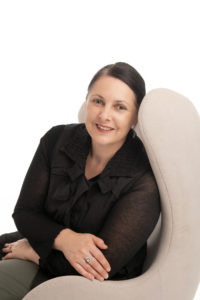About Us
We love interiors and beautiful things, but we also believe that a home should be created in a way that supports wellbeing!
“Healthy Interiors” evolved as a consequence of a young Interior Designer mum renovating while simultaneously struggling with her childrens health issues. Pieces of a puzzle emerged over time to reveal that many of the materials and finishes used in the building industry and household practices have the potential to impact on the health of homes and the health of occupants.
How we started – A solid foundation
 Melissa Wittig is the Principal of Healthy Interiors with a structural and aesthetic understanding of the home environment.
Melissa Wittig is the Principal of Healthy Interiors with a structural and aesthetic understanding of the home environment.
Melissa has shared her specialist knowledge across a range of forums including ; National & International exhibitions, has been published in National magazines (House & Garden and Sanctuary Magazine) and interviewed on radio and television. Further, she has authored an Award recognised App and an Award recognised book – The Smart Living Handbook (foreword by respected Prof Peter Sly), released in 2014 and promoted by Good Environmental Choice Australia (for further information view the media page). Melissa has participated on an advisory committee with Good Environmental Choice Australia in relation to furnishings and continues to collaborate with individuals, organisations and industry to find ways to educate consumers about healthy spaces.
Melissa’s passion for healthy spaces has evolved since the 1990s as a result of personal and family (environmentally linked) health experiences and professional experiences in the Property and Interior design sectors.
With over ten years in the Property sector working in residential and commercial property management Melissa has seen and managed the best and worst of living conditions. Having worn the hat of being a tenant, professional residential manager (over ten years), a renovator of 2 houses (1950s and 1960s style), as a landlord and thereafter Interior designer Melissa has developed an appreciation for the complexities of the residential property sector. The one perspective that sparked a driving passion for knowledge and change in the home environment was becoming a parent.
After struggling with PCOS (which has been linked to environmental pollutants) and pregnancies, followed by infant allergy and respiratory issues, it was reading the ingredients of a major brand baby shampoo bottle that shocked her into investigating the way their family lived and household products used. The realisation that harmful ingredients were in products that had been trusted opened a flood gate of questions on all household products. Material Safety Data sheets and product labels became essential reading, raising more questions.
Raising young children with allergies and reoccurring illnesses while studying interior design in the early 2000’s at night allowed Melissa to build upon her knowledge and qualifications in the design sector and begin to question the materials and finishes that were bought into the home environment. While reading material and finishes specification documents (and further investigating substances used to create products that were being used in homes), it became very obvious that households were being filled with many indoor environmental toxins and the quality of indoor air was being compromised.
It was the very well documented confirmation that indoor environmental contaminants are associated with illness that has been the driving force behind Melissa’s motivation to inform families about the health hazards lurking in their home. If the World Health Organisation, Independent International Agencies and the Australian Government knew homes could make people sick – why were people not being educated so that they could make healthy choices for their home environment and their family?
Many of the health hazards within the home environment have solutions that are accessible to most people in Australia, its knowing what to look for that is tricky. It is the range of “not so obvious hazards” that has continued to motivate Melissa’s advocacy for these issues. Simple solutions (once you know how to recognise an issue) do exist that can help families avoid/minimise illness, minimise exposures to toxic pollutants and provide safer spaces for families.







 Register Your Product
Register Your Product